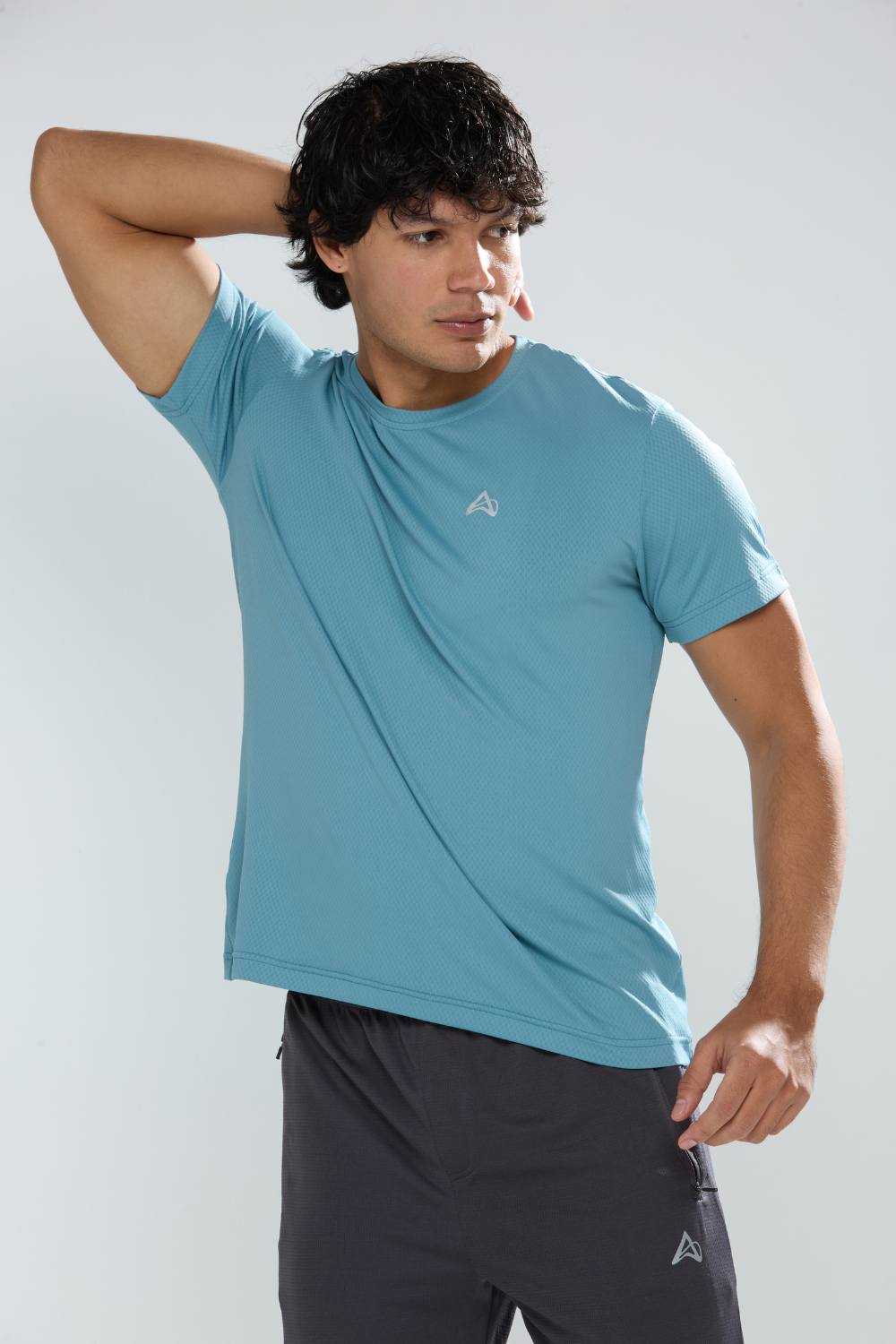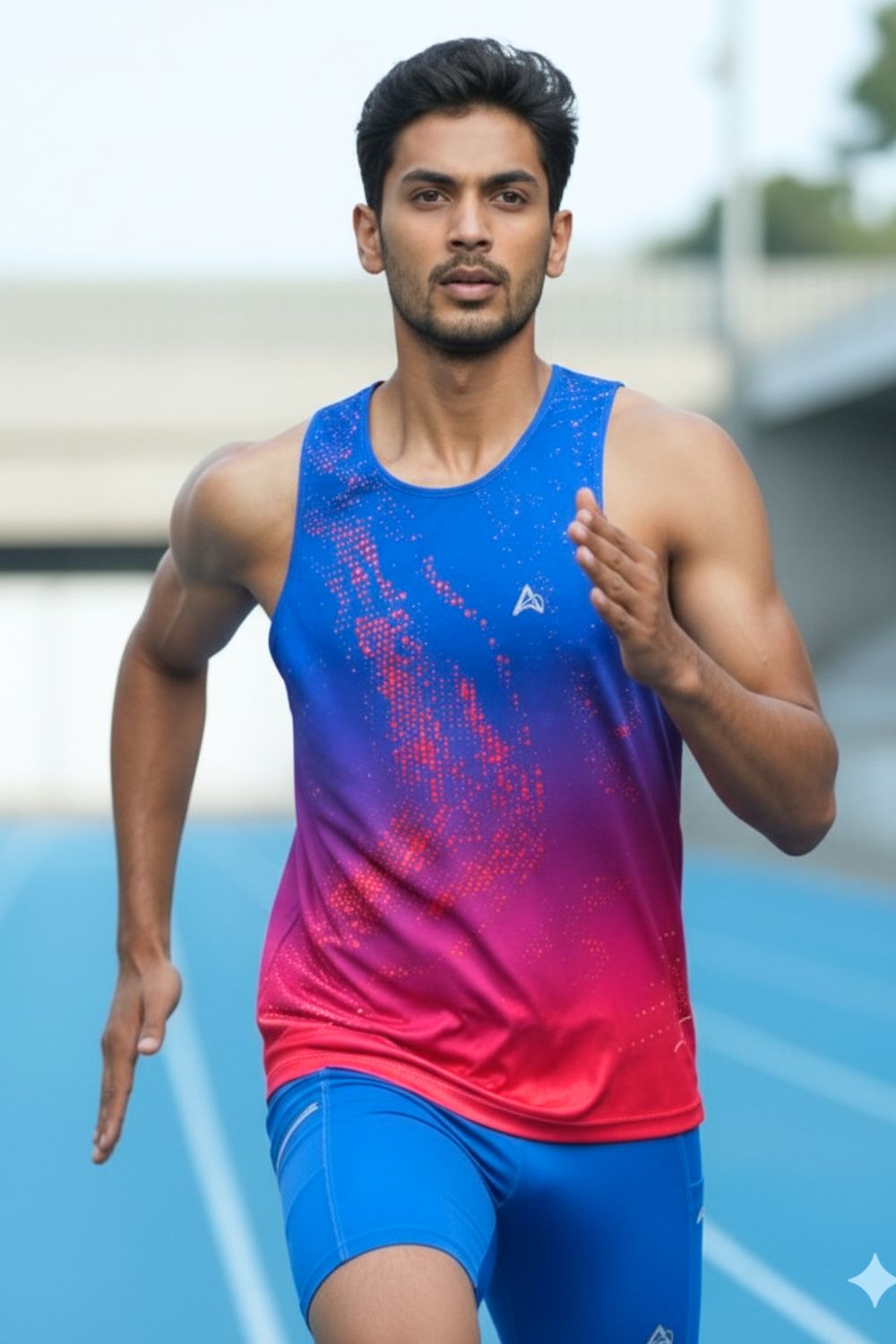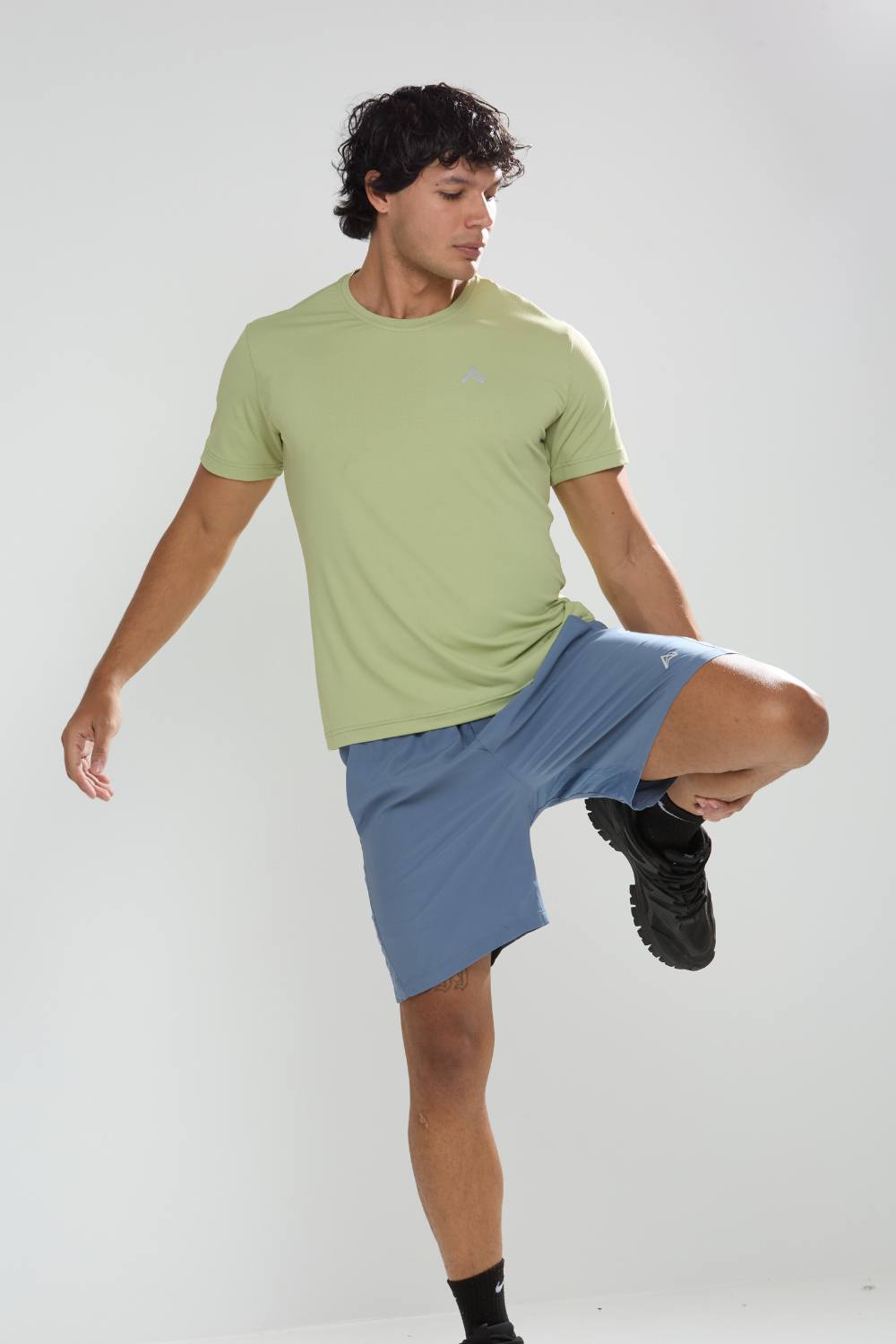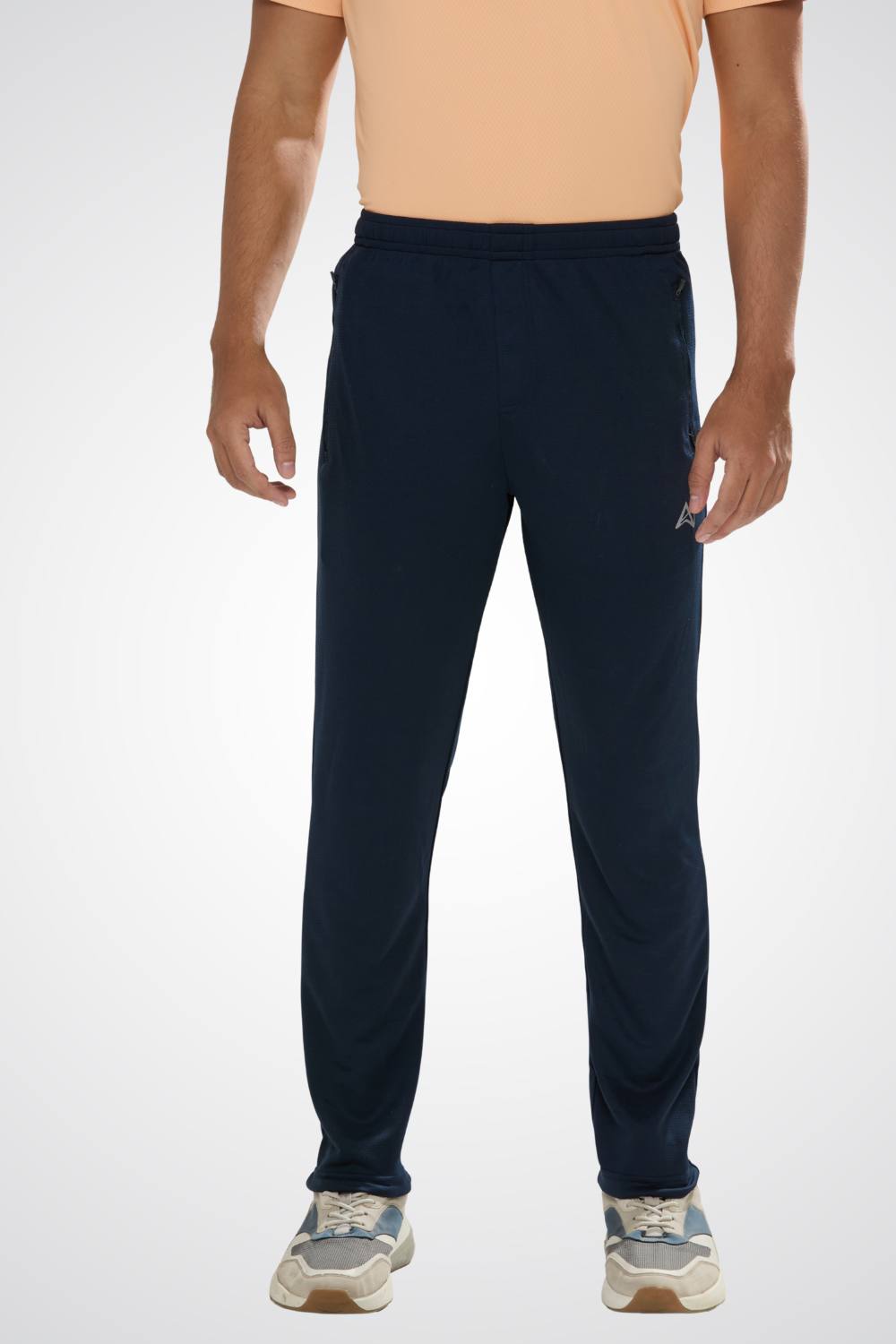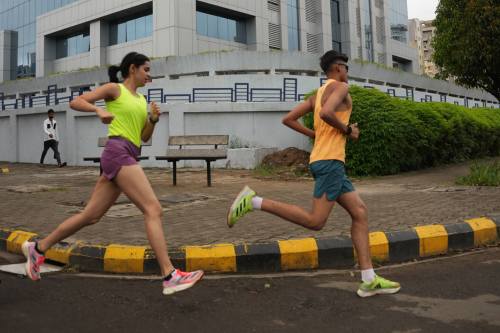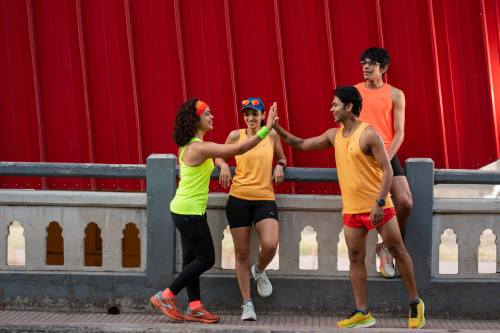Quick Listen:
In Mumbai, where the skies unleash torrents that turn streets into rivers, runners don't stop. They adapt. On a humid July morning, you'll find them weaving through puddles in Marine Drive, their neon shoes splashing against the slick pavement, their lightweight jackets shedding water like a second skin. For India's growing legion of runners part of a fitness revolution sweeping urban centers the monsoon season isn't a deterrent but a challenge to conquer. And it's driving a quiet revolution in activewear, with brands racing to design gear that can handle the deluge.
Tired of gear that slows you down? Chafing, soggy fabrics, and missing pockets kill your run's momentum. At Aguante, we're runners who get it. Our high-performance activewear features moisture-wicking fabrics, ergonomic designs, and smart storage to keep you focused. Shop Now!
How Indian Runners Tackle the Monsoon
India's running culture is booming. From marathons in Delhi to trail runs in Bengaluru's misty outskirts, the sport has surged in popularity, fueled by rising health awareness and the proliferation of local races. According to a report by IMARC Group, the India running gear market hit $2.4 billion in 2024 and is projected to double to $4.8 billion by 2033, growing at a robust 7.71% CAGR. Urbanization, disposable income, and endorsements from athletes are propelling this growth, but the monsoon lasting from June to September poses a unique hurdle. Heavy rainfall, stifling humidity, and muddy trails demand apparel that performs under pressure.
Runners in India face conditions unlike those in milder climates. A sudden downpour can soak a cotton T-shirt in seconds, leaving it heavy and chafing. Muddy paths require shoes with grip that won't slip on wet rocks. Low visibility in stormy weather calls for bright, reflective gear. It's no surprise, then, that Indian runners are driving demand for specialized activewear tailored to these challenges.
Innovations in Monsoon-Ready Activewear
Brands, both global and homegrown, are responding with cutting-edge designs. Water-resistant fabrics, like polyester blends treated with hydrophobic coatings, are now standard in high-performance running apparel. Mesh ventilation zones keep runners cool in humid conditions, while quick-dry technology ensures soaked gear doesn't stay that way for long. Flat seams and sweat-wicking linings reduce chafing, a common issue when damp skin rubs against fabric for miles. Footwear, too, has evolved: running shoes now feature water-drainage systems and slip-resistant soles to tackle slick surfaces.
Visibility is another priority. Gloomy monsoon skies reduce light, so brands are incorporating reflective strips and vibrant colors into their designs. A runner in Delhi's Lodhi Garden, for instance, might sport a neon-yellow jacket that catches the eye even in a downpour. These innovations aren't just functional they're reshaping how runners approach the season. “It's about confidence,” says a Bengaluru-based marathoner who trains year-round. “The right gear means I don't have to cancel a run just because it's pouring.”
Local Brands Step Up
While global giants like Nike and Adidas dominate the global sports apparel market valued at $211.57 billion in 2024 and projected to hit $298.06 billion by 2032 with a 4.41% CAGR Indian brands are carving out a niche. Companies like Performax and HRX are experimenting with monsoon-specific collections, blending global technology with local insights. For example, some Indian startups are designing lightweight waterproof jackets that pack down small enough to fit in a runner's waistband, ideal for the unpredictable weather shifts of a Mumbai monsoon. Others are focusing on affordable compression socks that keep feet dry and blister-free.
In South India, where humidity can hit 90%, runners are turning to brands that prioritize breathability without sacrificing water resistance. A Chennai running group recently tested a locally made quick-dry T-shirt with laser-cut ventilation holes, praising its ability to stay light even after a 10K in the rain. These innovations reflect a broader trend: Indian activewear brands are listening to runner's needs and tailoring solutions to the country's diverse climates.
Challenges on the Path
Despite these advances, monsoon running isn't without its hurdles. High humidity can make even the most breathable fabrics feel heavy when soaked. Prolonged dampness increases the risk of skin issues like rashes or fungal infections, especially for runners logging long miles. Quality gear comes at a cost, too. Imported monsoon-ready apparel, while durable, is often priced out of reach for many in India's tier-2 and tier-3 cities, where running communities are also growing. Cheaper alternatives, meanwhile, may not hold up under the relentless rain.
Supply chain issues add another layer of complexity. The spike in demand for seasonal gear often outpaces distribution, leaving runners in smaller cities scrambling to find the right equipment. “I had to order my water-resistant shoes online from a specialty store,” says a runner from Pune. “Local shops just don't stock enough of this stuff.” E-commerce is helping bridge this gap, with platforms offering a wider range of running footwear, apparel, and accessories, as noted in the IMARC report.
Opportunities in a Growing Market
The monsoon challenge is also a golden opportunity for brands. India's activewear market is ripe for growth, particularly for companies that can deliver affordable, high-performance gear tailored to local conditions. Eco-friendly innovations, like sustainable water-resistant coatings, could set premium brands apart while appealing to environmentally conscious consumers. The rise of monsoon-friendly running events think muddy trail races or urban 5Ks creates a targeted retail window for brands to showcase their latest collections.
Collaborations with running clubs are another smart move. In cities like Mumbai and Delhi NCR, where running groups thrive, brands are partnering with communities to test products and build loyalty. A Delhi-based running coach shared how a local brand sponsored their group's monsoon marathon training, providing quick-dry shorts and reflective vests that became instant favorites. These partnerships not only drive sales but also give brands real-world feedback to refine their designs.
A Resilient Future for Indian Runners
As India's running culture continues to flourish, the monsoon is no longer a season to dread but one to embrace. Industry experts predict steady growth in the activewear sector, with weather-adaptive gear becoming a key driver. Brands that invest in localized research understanding the nuances of India's varied climates will likely lead the pack. Storytelling, too, will play a role: positioning apparel as an essential tool for resilient athletes resonates with runners who see every rain-soaked mile as a badge of honor.
Looking ahead, India's activewear market is poised to mirror global trends, with season-specific collections becoming a staple. The global sports apparel market data underscores this shift, noting that 65% of urban adults now own functional activewear, a trend fueled by athleisure's rise. For Indian runners, monsoon-ready gear isn't just about performance it's about defiance, about lacing up when the skies open and proving that no storm can stop them. As one Mumbai runner put it, “The rain doesn't decide my run. My gear does.”
Frequently Asked Questions
What makes running gear suitable for India's monsoon season?
Monsoon-ready running gear features water-resistant fabrics with hydrophobic coatings, quick-dry technology, and mesh ventilation zones to handle India's heavy rainfall and high humidity. Key features include flat seams to prevent chafing, reflective strips for low-visibility conditions, and slip-resistant soles for wet surfaces. These innovations help runners maintain performance even during torrential downpours from June to September.
How big is India's running gear market and what's driving its growth?
India's running gear market reached $2.4 billion in 2024 and is projected to double to $4.8 billion by 2033, growing at 7.71% CAGR. The growth is fueled by rising health awareness, urbanization, increased disposable income, and athlete endorsements. The unique challenge of monsoon seasons has also created demand for specialized weather-adaptive activewear that can handle India's diverse climate conditions.
Are Indian activewear brands competing with global giants like Nike and Adidas for monsoon running gear?
Yes, Indian brands like Performax and HRX are carving out a niche by creating monsoon-specific collections that blend global technology with local climate insights. These homegrown brands focus on affordable solutions like lightweight waterproof jackets that pack small, quick-dry T-shirts with laser-cut ventilation, and compression socks designed for India's high humidity conditions. They're gaining traction by listening to local runner's needs and offering more accessible pricing than imported alternatives.
Disclaimer: The above helpful resources content contains personal opinions and experiences. The information provided is for general knowledge and does not constitute professional advice.
You may also be interested in: How Indian Runners Build Endurance With Proper Gear
Tired of gear that slows you down? Chafing, soggy fabrics, and missing pockets kill your run's momentum. At Aguante, we're runners who get it. Our high-performance activewear features moisture-wicking fabrics, ergonomic designs, and smart storage to keep you focused. Shop Now!
Powered by flareAI.co





